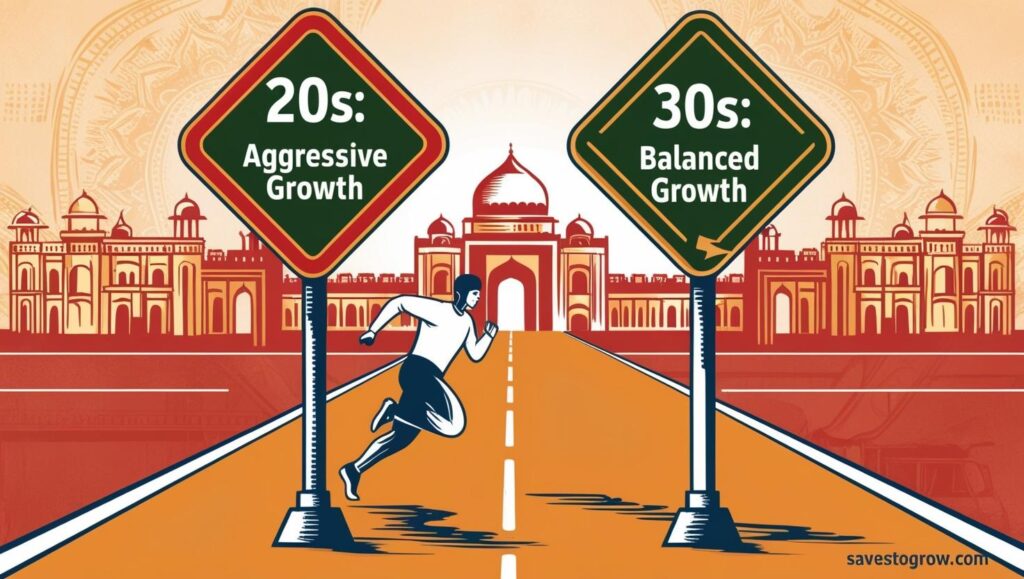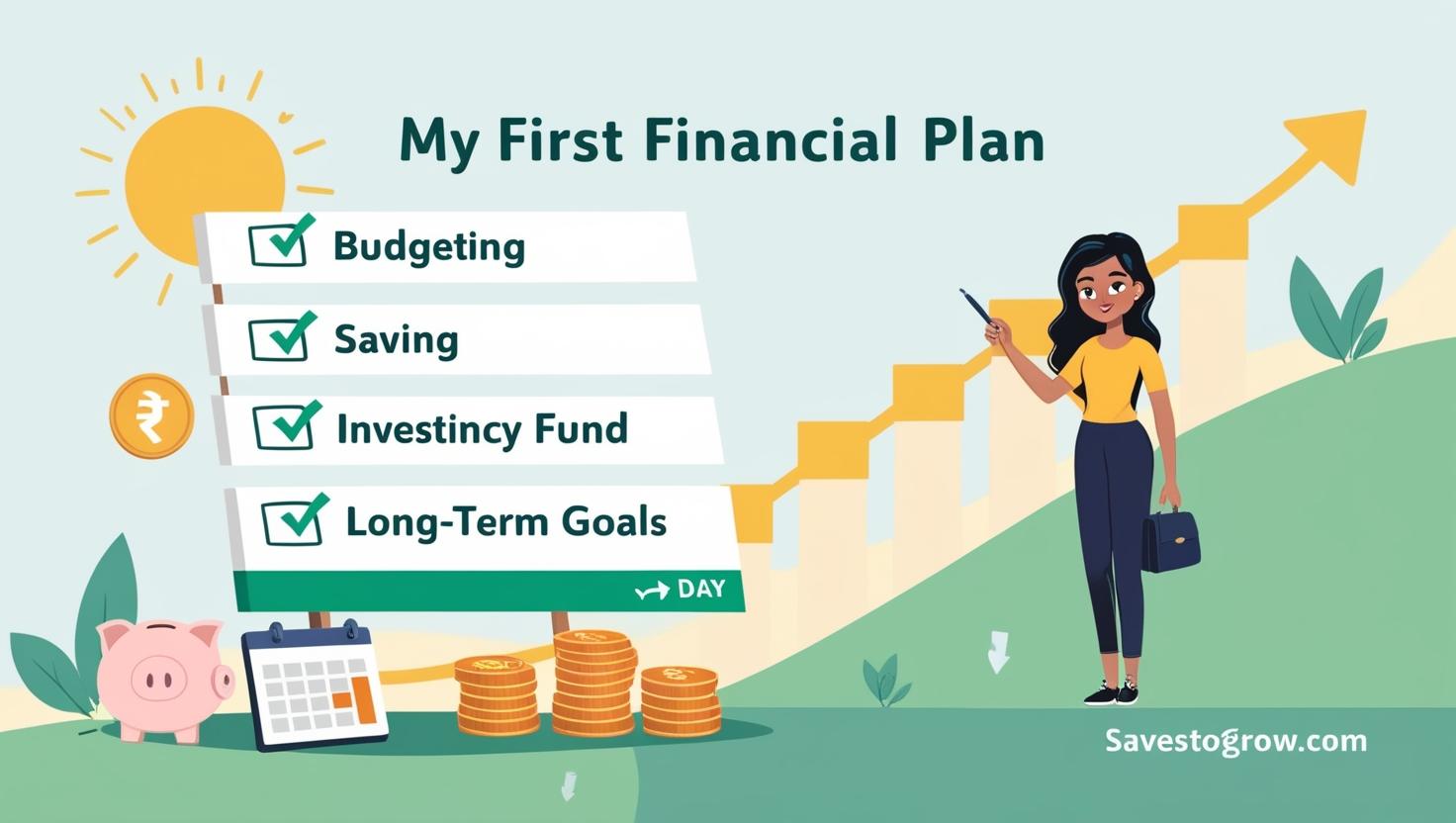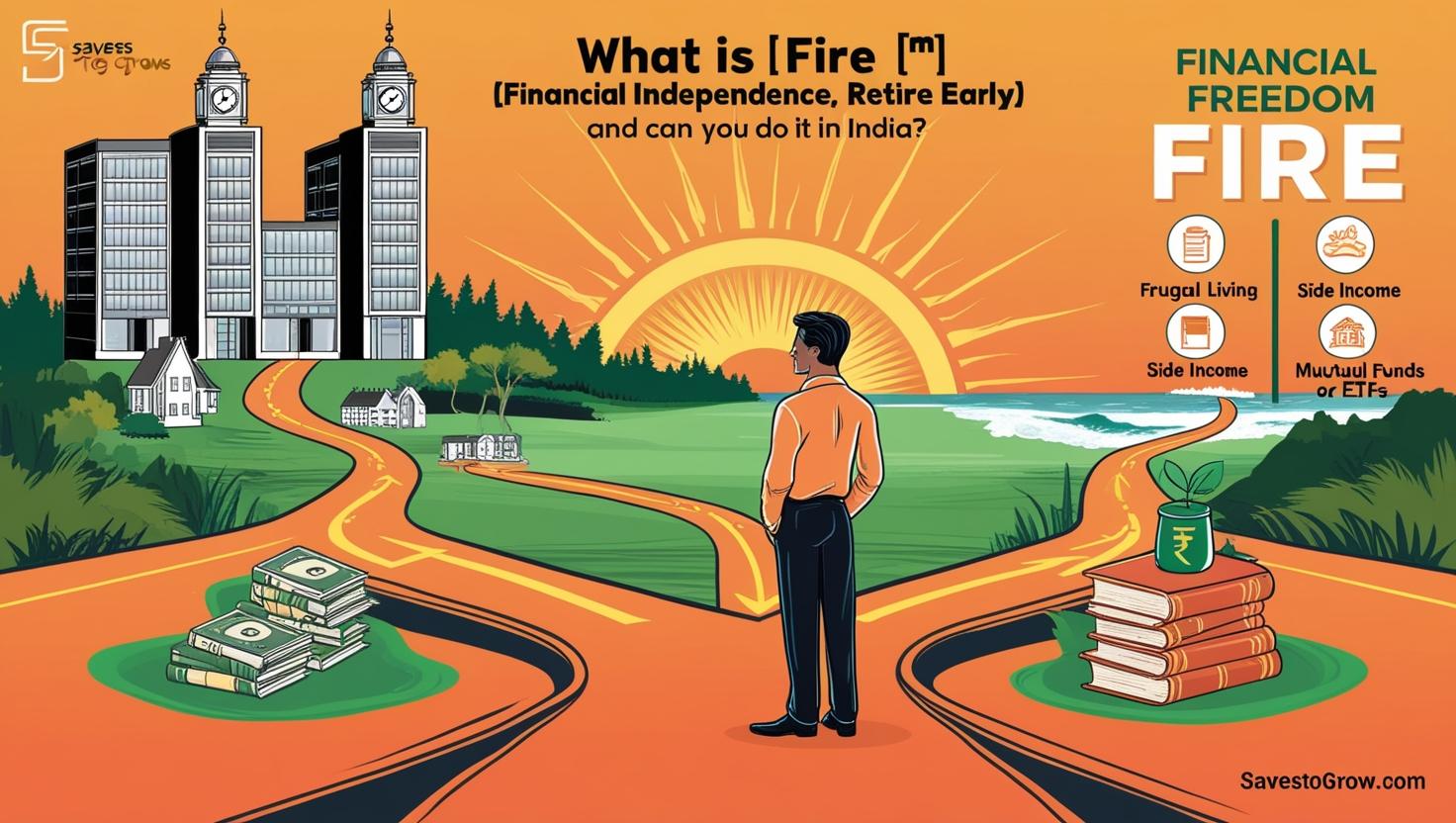Why Your Investing Strategy Must Evolve?
Your 20s are about exploration—figuring out careers, managing first paychecks, and maybe even some impulsive spending. 🎉 By your 30s, responsibilities grow—home loans, family planning, and career shifts demand a more structured approach.
In India, where financial markets, inflation, and cultural expectations play a big role, adjusting your investments is crucial. Let’s break down how investing changes between these two decades.
📊 Investing in Your 20s: The Foundation Phase

1. Higher Risk Tolerance
- You have time to recover from market dips.
- Equity-heavy portfolios (stocks, equity mutual funds) make sense.
- Example: Starting a SIP in a Nifty 50 index fund early can compound massively.
2. Lower Financial Commitments
- Fewer liabilities (no home loans, dependents).
- Can invest aggressively—30-50% in equities, rest in debt or emergency funds.
3. Focus on Skill & Career Growth
- Your biggest asset? Earning potential.
- Invest in upskilling (courses, certifications) to boost income.
4. Mistakes Are Lessons
- Splurging on gadgets? Market FOMO? Common, but recoverable.
- Use apps like Groww or Coin by Zerodha to start small.
🏡 Investing in Your 30s: The Balancing Act

1. Risk Appetite Drops (Slightly)
- More responsibilities = Need for stability.
- Shift to 60% equities, 40% debt (PPF, bonds, hybrid funds).
2. Major Financial Goals Kick In
- Buying a home? Home loans change cash flows.
- Kids’ education? Start a Sukanya Samriddhi Yojana (for girls) or mutual fund SIP.
- Retirement planning becomes urgent—NPS or EPF + mutual funds.
3. Tax Efficiency Matters More
- Use Section 80C (ELSS, PPF, insurance) smartly.
- Health insurance (Section 80D) is non-negotiable.
4. Passive Income Becomes Key
- Explore rental income, dividends, or side hustles.
- Review investments yearly—consolidate underperformers.
🔄 Key Adjustments From 20s to 30s
| Factor | 20s | 30s |
|---|---|---|
| Risk Level | High (80% equity) | Moderate (60% equity) |
| Emergency Fund | 3-6 months | 6-12 months |
| Insurance | Basic term plan | Term + health + critical illness |
| Goal Focus | Wealth creation | Wealth + security |
💡 Pro Tips for Both Decades
✅ Start early, even with small amounts – ₹500/month in a SIP today beats ₹5000/month later.
✅ Automate investments – Set up auto-debits to avoid procrastination.
✅ Avoid lifestyle inflation – Just because salary doubles doesn’t mean expenses should.
✅ Keep learning – Follow SEBI-registered advisors, not social media “gurus.”

Final Thought: It’s Never Too Late (or Early)
Whether you’re 25 or 35, the best time to invest was yesterday—the next best is today. Adjust your strategy as life changes, but keep growing your money wisely. 🌱
📚 Sources & Further Reading
- SEBI Investor Handbook – SEBI Website
- RBI’s Financial Literacy Guides – RBI Portal
- Books: Let’s Talk Money by Monika Halan, The Psychology of Money by Morgan Housel





